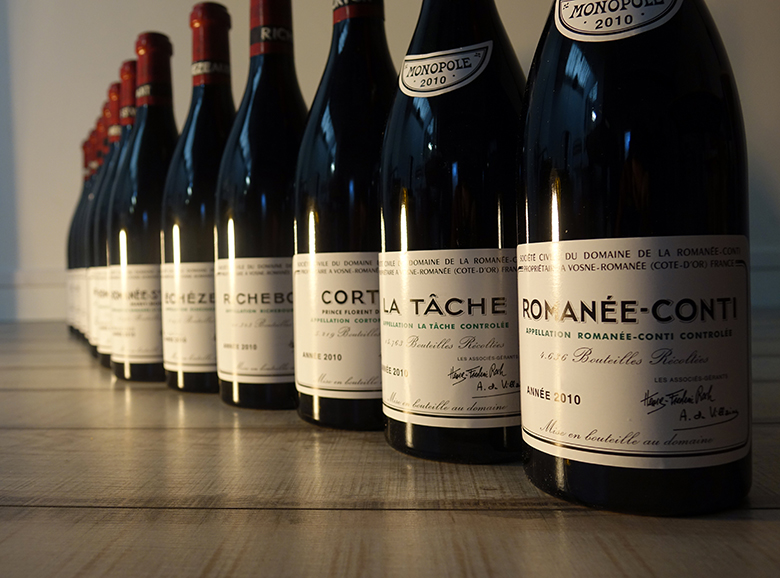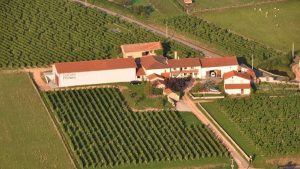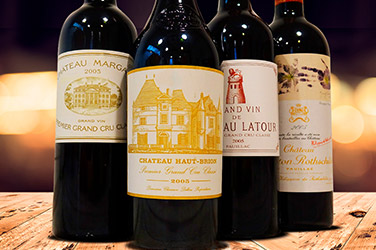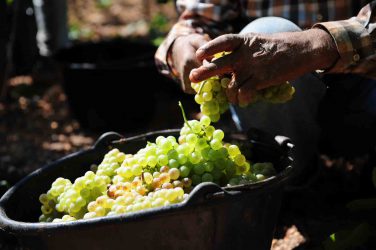
All that is rare is expensive. A cheap Burgundy is rare. So a cheap Burgundy is expensive. Behind this old joke there is unfortunately a glimmer of truth when it is considered that generic Burgundies easily reach prices of €20/25, even more than €35 in some of the more ‘sophisticated’ domains dear to wine enthusiasts. As for the ‘village’ wines, they are often more than €30 in the appellations that get less media coverage, and more than €40 for those promoted as the fanciest…prices belonging to good Premiers Crus not so long ago. In less than twenty years, Burgundy prices have at least doubled, with even higher price hikes seen for climates and winemakers of particular notoriety. How can this inflation be explained? A few factors go a long way to answering this question. There is firstly a more general phenomenon that touches many of France’s appellations, made worse in Burgundy by two causes in conjunction: the price of land and climatic uncertainties.
A general phenomenon
It certainly won’t console fans of Pinot Noir and Chardonnay, but several appellations have seen their prices soar in recent years, with some variation. Everyone will undoubtedly think of Bordeaux where the phenomenon began in 1995 and saw a steep increase with the 2000 vintage being the magic number. Since then, it hasn’t really slowed, even if in reality this inflation concerns only around fourty properties, masking the fact that most of the lovely Bordeaux wines have undergone price increases at quite a reasonable rate. Among other French vineyards, Châteauneuf-du-Pape comes to mind in the Rhône valley, but also the northern Rhône where winemakers have brought their figures right up. For wine lovers, there are unfortunately very few regions that have bucked this trend – there are several small appellations in the South-West, the southern Rhône apart from Châteauneuf, a significant proportion of the Loire Valley, Languedoc and Provence (most Bandols for example).
There are several explanations for these rises in price. The first is linked to the globalisation of demand and the fact of new consumerist countries emerging, notable in Asia. This increased demand in the face of stable production of quality wines has automatically led to higher prices. The second reason is the increase in quality and in the level of work carried out in the great majority of vineyards. Even if we know that the actual cost of a bottle is not decisive in its market price, it is still true that for appellations thus far priced at a reasonable level, a shift in several domains towards organic and biodynamic production has played a slightly inflationist role. Burgundy is especially susceptible to this phenomenon where the vineyard is not only extremely fragmented, but also often dispersed between Côte de Nuits to the north and Côte de Beaune to the south, with a single domain growing vines in several appellations. These are conditions which affect the actual price, even if this remains only a modest percentage of the final price paid by the consumer, particularly in the case of bottles going for over €40 or €60…
The third reason is the frenzy that took hold several years ago for connoisseur wines and marginal, neglected appellations which deserved better recognition. Certain domains and appellations, known until recently only by a handful of especially attentive enthusiasts, have achieved rapid and suprising notoriety via, among other things, social networks, provoking a tangible increase in demand and price for wines with generally low levels of production.
Land
Symbolically, it was clearly the price reached by the 2014 and 2017 sales of two bottles of Burgundy – Clos des Lambrays and Clos de Tart – which marked a turning point in this other kind of inflation, that of the price of viticultural land. For the 10.71 hectares of Domaine des Lambrays (of which 8.66 dedicated to the eponymous clos), Bernard Arnault’s team paid over €100 million, and three years later, François Pinault beat that by spending around €280 million on the 7.53 hectares of Clos de Tart. And this is without mentioning an even more recent purchase of a family property, Domaine Bonneau du Martray, which belonged to the Le Bault de la Morinière family for two centuries. It was sold to the American millionaire Stanley Kroenke, the largest shareholder in Arsenal football club and owner of fine Californian vineyards, for an estimated price of around €200 million…
Dizzying prices, that’s for sure, and they’ve had the effect of pushing up the land prices of all the grands crus and other Burgundian climats. And something which is quite new to this region, compared to Bordeaux where it has been common practice for longer, is the purchasing of domains by financial groups instead of winemaking families. This changes the spirit of these purchases, as Albéric Bichot has underlined: “These are patrimonial investments that don’t necessarily seek to be profitable. Whereas for us winemakers, for normal people, there has to be a financial return by necessity.” And Jean-Michel Aubinel, President of the Confederation of Burgundian Appellations and Winegrowers (CAVB) concurs: “It’s a catastrophe in the mid-term for the four thousand Burgundian winegrowers. Even selling a bottle for 300 euros, you would need several generations for the investment to pay off. You invest in this wine like you would invest in a Picasso.” This is really the heart of the problem. Taking account of the high level of inheritance tax in France, winemaking families feel they must raise the price of their bottles in line with land inflation in order to create ‘war chests’ that will one day pay the famous inheritance taxes. Because of this law, children who inherit from their deceased parents don’t have any choice but to sell the family’s domain, or at best give up a large part of it. And all this before even touching on young winegrowers hoping to set up in Burgundy…The absurd price hike of viticultural land goes a long way to explaining why the increasing cost of bottles is particularly dominant here.
Climatic uncertainties
To finish, it is pertinent to mention a series of climatic phenomena (particularly ice and hail) that have affected Burgundy in its more recent vintages. Add to this a surge of mildew that began over ten year ago. The consequence is always the same: a drop in production that can sometimes touch on 100%. And even if it is fortunately rare for the situation to be that extreme, several winemakers have lost the equivalent of at least a whole harvest over a period of two or three years. It’s even more of a problem that very few are insured and that only those with a stock of previous vintages manage to make up for the loss by selling these when production is low. This problem isn’t unique to Burgundy (the Loire has also been hit hard in recent times), but the effect is often greater due to the fact that the properties are usually on the smaller size and so don’t have large stocks on which to fall back. Consequently, their natural reflex is to carefully increase the price of their bottles to make up for the drop in production. In terms of the wine lover’s wallet, this would be entirely acceptable if, when the region saw two or three ‘normal’ vintages, the price were reduced, even slightly. But evidently this is never the case, and since it should be recognised that disturbances in the climate don’t seem to be calming down, we need to get used to the idea that in years to come, Burgundian domains will always have the pretext of the climate to justify their price increases…
Unfortunately, there’s little point getting your hopes up: whether it’s for structural or seasonal reasons, because of the global market or issues local to Burgundy, the price of fine Pinot Noir and excellent Chardonnay will not cease to increase, at variable rates, in years to come. But even though it’s a shame for some of the bigger Burgundy names to be inaccessible to a large number of wine enthusiasts, it remains the case that the lesser publicised appellations like the Côte Chalonnaise and Mâconnais mean you can get your hands on some lovely wines for very reasonable prices. Considering the more modest size of its vineyard, this ‘shortcut’ is certainly smaller than in Bordeaux where the immense inflation in prices only concerns a few domains, but it does exist. More than ever, it’s necessary to buy smart! At iDealwine, we will make sure to point you in the right direction with our advice.



